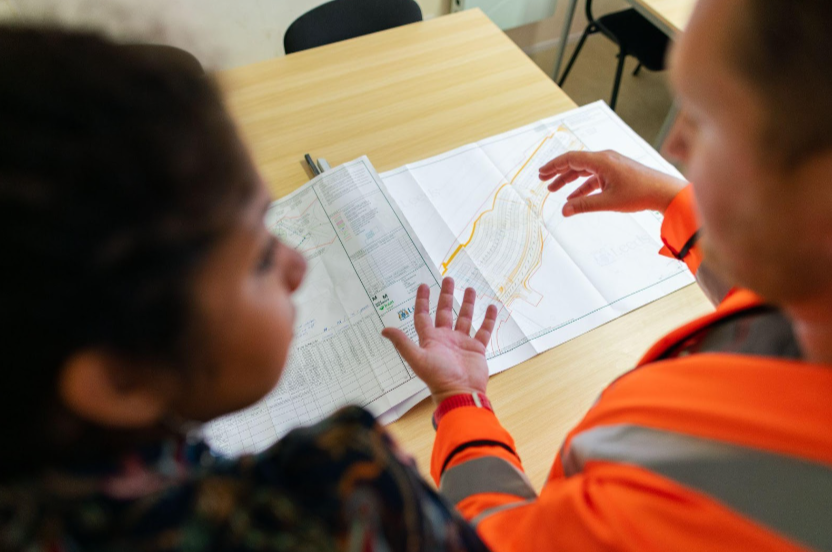One of the problems associated with the construction industry is contractor payment management. This is because arranging and managing the several activities that come with overseeing a construction project from the beginning until completion can be huge. This is especially true since there are so many payments between the projects.
It can become a huge problem, even for the general contractor in charge of the project, to manage some of these payment processes and release payments to workers on time. Before payment is released, a billing process is used to estimate and gather information on the cost required by the client.
The process is handled by the accounts payable team, who then have to spend hours, days, and even weeks manually providing the data from different documents to calculate the project cost, the amount spent so far, and any additional costs. All these things form a stressful process that can be draining and unproductive for the company.
In this article, we will delve deeper into how payments work in the construction industry. We also discuss the best practices for managing stress-free contractor payments.
What is a payment application?

When working on a construction project that lasts for months or even years, it’s critical to have payment systems. That’s where payment applications, or pay apps, come in; they’re like a roadmap that breaks down the overall project cost into smaller, more manageable parts. These documents help organize the billing process by breaking it down into smaller, manageable steps.
As contractors work on the project, they get paid for various stages. Some of these projects might also require additional funds to buy supplies or make changes to the plan. But before getting paid, it is a requirement to document and approve each completed step. In addition, they’ll need to keep track of receipts and plan changes.
Pay apps usually display information about the progress of the project. This includes how much work has been done and if any changes have been made to the plan. They might also include receipts for materials or labor costs.
Once the Pay app is submitted, it needs to be approved by the right people. This could be the project owner, the general contractor, or other people involved in the project. Once it’s approved, the contractor or subcontractor gets paid for the work they’ve completed up to that point.
However, payment applications present clients with the dilemma of how to pay contractor with credit card.
Challenges in Processing Construction Payment Applications

Although payment applications are essential to completing the billing process for construction contractors, they can be stressful and draining to complete. Construction workers are probably familiar with payment apps and the headaches they can cause. Keeping track of all the invoices and documentation involved in the billing process can be a real pain. This can create a lot of stress when getting paid.
In most jobs, people expect to get paid regularly, like once a week or twice a month. But in construction, things work differently. Because projects can take a long time to complete and involve so many different contractors and subcontractors, the billing process is more complicated. Each step of the project needs to be documented and approved before payments can be made, which can cause delays for everyone involved.
Many things slow down construction payment processes. For one thing, multiple teams could be working on a single project. This means there are many different invoices and supporting documents to keep track of.
All of this can create stress for everyone involved in a construction project. That’s why it’s imperative to have a system in place for managing payment apps and streamlining billing. By staying on top of invoices and documentation, you can ensure everyone gets paid on time so the project can continue.
Some of the most common challenges faced with construction payments include:
- Delay in payment
When you are working on a construction project, you know how important it is to keep things moving forward. Unfortunately, if pay app documents like change orders, purchase orders, or lien waivers aren’t submitted or approved on time, everything slows down.
This delay can be frustrating for everyone involved, from the general contractor to the subcontractors and even the project owner. To keep the project on track, it’s necessary to ensure that all necessary documents are submitted and approved on time. Another cause of delay arises when clients have to ensure contractors accept credit cards.
- Errors in the documentation
In the billing process, contractors need a lot of detailed information to ensure everyone gets paid accurately. But if something’s missing or entered incorrectly, the payment application can be rejected, and the whole process must start again. An alternative option to this could be the use of a contractor credit card to streamline the payment process.
- Data entry challenges
Processing pay apps takes hours of manual labor each week. It’s a headache for everyone involved, not just the contractors. The office folks have to deal with it too, and it can be super complicated.
- Handling missing documents
Every payment app needs supporting documents, like photos, lien waivers, change orders, vendor invoices, and receipts. If any of these are missing, it can hold up payments or even make them incorrect in the first place.
- Issues with compliance
Construction projects must follow several building codes and regulations. Having detailed documentation of the whole project is one way to prove everything’s above board and safe. If documents or photos are missing, fines or legal trouble could result.
5 Best Practices for Stress-free Contractor Payments
Set up a clear payment schedule
In every construction project, the contractor must set up a clear payment schedule. This schedule covers how the contractor expects to be paid, the specified amounts, and at what intervals.
Having a clear payment schedule helps the contractor specify when payment is expected as well as when to pay the workers. This helps avoid disputes and friction during the project. Without proper documentation, the team won’t get paid for their effort and work.
By creating standardized billing documents, like pay apps, lien waivers, schedules of values, and purchase orders, contractors can eliminate payment errors and compliance issues. This means that subcontractors and vendors will know exactly what to expect, and the payment process will be streamlined for everyone involved.
Choose a reliable payment method
Most contractors get paid by sending invoices by mail to the project owner, who can take time to respond. However, with technology and digital innovations, there are now contractor credit card processing solutions that allow project owners to pay with a contractor credit card.
This makes the process smoother for both the contractor and the client. It prevents late payments as well as a ton of paperwork and back-and-forth.
Automate payment processes
Manual, paper-based processes are still common, but they can be frustrating. They’re slow, error-prone, and can result in late payments, which can be a real problem for companies. Luckily, there are software solutions designed specifically for the construction industry that can make the payment process smoother.
These solutions can help in several ways, including by ensuring accurate information and speedy movement through the system. They can also eliminate the hours of manual data entry required each week. In addition, they can reduce stress over billing documents, which are critical to getting paid for completed work.
Maintain open communication
In the construction industry, communication is crucial to creating accurate estimates. It’s essential to keep everyone in the loop, from the back office to the general contractor to subcontractors, vendors, and property owners. The general contractor needs to keep everyone informed about the project’s progress and payment information.
To make this happen, a general contractor needs various ways to communicate with everyone on the team. They need to identify potential issues early and provide quick solutions. One way to achieve this is by using technology-based communication solutions. These solutions offer several ways to connect with team members during the project. They also transfer critical information and visual documentation without paper.
Track and reconcile payments.
The truth is, construction projects can take a long time to complete. That’s why it’s crucial to ensure everyone involved in the project receives payments throughout the job. That’s where lien waivers come in. They’re like receipts that vendors, contractors, and subcontractors use to confirm payment for their services or labor.
But here’s the thing: many construction offices don’t have a clear lien waiver process. Each vendor and subcontractor may have their way of submitting waivers, making it difficult for the accounts payable team to keep track of everything. This can lead to hours of wasted time tracking down correct and up-to-date information.
To simplify the process, it’s imperative to create a streamlined process for lien waivers. This way, everyone working on the project knows exactly what to do and when to do it.
Conclusion
The construction industry faces unique challenges when it comes to billing and payments. Manual, paper-based processes can be inefficient and inaccurate, leading to delays, errors, and lost revenue. However, software solutions designed specifically for construction can streamline the payment process by providing automated reminders for payment. By adopting these solutions, companies can reduce stress and save time and money, allowing them to focus on completing projects efficiently and effectively.















